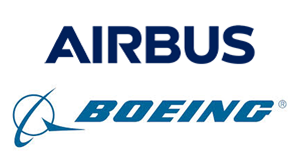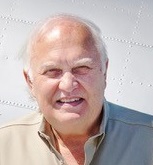Leeham News and Analysis
There's more to real news than a news release.
 Leeham News and Analysis
Leeham News and Analysis
- GE testing of giant GE9X engine aims for maturity at entry into service June 30, 2025
- Bjorn’s Corner: Air Transport’s route to 2050. Part 28. June 27, 2025
- Parent agency, FAA often at odds as politics outweighs safety June 26, 2025
- Electric Flight and the Ugly Duckling June 25, 2025
- Engine makers tout “Plan A” but have “Plan B” backups in R&D June 23, 2025
HOTR: Consensus that Boeing must launch new airplane in 2023 or 2024
By Scott Hamilton
Feb. 15, 2022, © Leeham News: There is a belief that when Boeing clears out much of its 737 MAX inventory, resumes delivery of the 787, and reduces a good portion of its debt that it will launch a new airplane program.
 The Next Boeing Airplane (NBA), as LNA calls it, could be launched in 2023 or 2024, which seems to be a growing consensus.
The Next Boeing Airplane (NBA), as LNA calls it, could be launched in 2023 or 2024, which seems to be a growing consensus.
Consultant Michel Merluzeau, who does work for Boeing on occasion, predicted last week that the NBA could be launched late next year or early the following year. The airplane would be a 225-240 passenger aircraft (two-class) and a single aisle. This is like the Boeing 757—which largely has exited passenger service—and the upper limits of the A321neo. Merluzeau made his predictions at the Pacific Northwest Aerospace Alliance conference.
Posted on February 15, 2022 by Scott Hamilton
Boeing’s apparent shifting product strategy
Subscription Required
By Scott Hamilton
Introduction
Aug. 2, 2021, © Leeham News: Boeing last week reiterated it believes the 777-9 will be certified and delivered in late 2023. CEO David Calhoun also said, “I’m confident that might be the next of our programs.”
Let’s set aside for the moment whether the EIS prediction becomes reality and assume Boeing will be correct. Let’s assume the 777-XF will be the next program launched. The larger question then becomes, what does this mean for the Next Boeing Airplane (NBA)? And what are the implications for Airbus?
Summary
- The NBA launch seems unlikely in 2022; 2023 may be the target.
- But with the 777-XF moving up in priorities, will the NBA continue to slide to the right?
- What is the Airbus response to an NBA?
- Or, should Airbus move first to further preempt the NBA?
Posted on August 2, 2021 by Scott Hamilton
Pontifications: The reshaped commercial aviation sector
July 12, 2021, © Leeham News: With Washington State and the US open for business following nearly 18 months of COVID-pandemic shut-down, there is a lot of optimism in commercial aviation.
In the US, airline passenger traffic headcounts are matching or exceeding pre-pandemic TSA screening numbers. Airlines are placing orders with Airbus, Boeing and even Embraer in slowly increasing frequency.
The supply chain to these three OEMs looks forward to a return to previous production rates.
It’s great to see and even feel this optimism. But the recovery will nevertheless be a slow if steady incline.
Posted on July 12, 2021 by Scott Hamilton
The conundrum of a new airplane design vs a derivative
Subscription Required
By Scott Hamilton
Introduction
April 19, 2020, © Leeham News: When it comes to a decision by an aircraft manufacturer whether to develop an entirely new airplane or a derivative, these multi-billion dollar decisions involve hundreds of thousands of considerations.
Sometimes derivatives will do the job. Sometimes a new airplane is the better choice.
Given that Boeing faces a decision whether to launch the Next Boeing Airplane (NBA) and Airbus must decide how to respond, all within the next few years, looking at the considerations and some history is timely.
Today’s examination is going to focus at the 40,000 ft level. We’re not going to delve down into the decisions over suppliers or the minutiae into production. Rather, we’re going to look at general strategy.
Summary
- Airbus wins big gamble with A320neo decision.
- Boeing was victor with 787, while Airbus missed with first A350 design.
- Boeing missed with 747-8I and, it appears so far, with 777X.
- Next airplane decision by Boeing will drive Airbus response. Read more
Aviation Writers Bloc: Calhoun’s Countdown
April 15, 2021, © Leeham News: Boeing CEO David Calhoun turns 64 on April 18. This means he is in his final year on Boeing’s Board of Directors and as an employee, unless the Board extends his contract beyond the mandatory retirement age of 65.
In a new feature, the Aviation Writers Bloc, LNA’s panel discusses Calhoun’s legacy, whether he’ll launch a new airplane program and whether Boeing Commercial Airplanes will remain headquartered in Puget Sound.
Posted on April 15, 2021 by Scott Hamilton
Analyzing the trades between a single- and twin-aisle NMA
Subscription Required
Now open to all readers.
By the Leeham News Team
Introduction
April 8, 2021, © Leeham News: Some people believe Boeing should launch a new single-aisle airplane about the size of the 757-200/300 to compete with the Airbus 321neo.
Others believe the new airplane should be a twin-aisle aircraft. A few, including LNA, believe the new airplane must be a three-member family and must be a twin-aisle.

The largest member of a single-aisle Boeing NMA would be longer than the Boeing 757-300. Photo: Delta Air Lines.
Whatever the new airplane is, the general specifications are aircraft up to 250 passengers in two classes and a range of up to 5,000nm.
There is also agreement the airplane must start across from the A321neo. Configurations vary widely, but 190-200 seats in two classes are common.
Boeing CEO David Calhoun said on an earnings call that the next new airplane will compete with the A321 and cover the Middle of the Market.
Summary
- A single-aisle, 250-passenger airplane would be longer than the 757-300.
- Technical build challenges, while not insurmountable, exist with long, thin airplane.
- Gate and ramp space constraints accompany a long airplane.
- Other trades exist for a twin-aisle design.
Posted on April 8, 2021 by Scott Hamilton
Differentiation in the marketplace and the time for the open rotor
Subscription Required
By the Leeham News Team
Introduction
Feb. 22, 2021, © Leeham News: Airliners are now so efficient, one challenge facing Airbus and Boeing in competing is overcoming the laws of diminishing returns.
LNA described this challenge Feb. 8. Additionally, airport infrastructure erects a vast number of design roadblocks.
We focused on the creation of the 737 replacement and how difficult it will be to make meaningful performance upgrades to the economics of the vehicle. We outlined the next battle in product differentiation most likely will occur in optimizing non-flying time operations, focusing on ground operations as the next efficiency battleground. Since then, it was reported that Boeing indicated that a new aircraft sized between the 737 and the 767/NMA was a front runner in their future planning.
Summary
- NMA Lite needed for 737-9/10 to 787-8 sector.
- Replacement for 737-7 and 737-8 best suited for Open Rotor design.
- What an Open Rotor plane might look like
Posted on February 22, 2021 by Scott Hamilton
Pontifications: Boeing’s right direction, but don’t get ahead of reality
Feb. 8, 2021, © Leeham News: Boeing appears to be heading in the right direction: launch a new airplane program to take care of its 737 MAX product weakness. And do something different by pursuing the “NMA Lite” concept: a twin-aisle, three-member family starting at ~185 seats through ~250 seat and up to 5,000nm in range.
But don’t get ahead of ourselves on the NMA Lite. There are a lot of Ts to cross and i’s to dot.
And anything can change between now and a concerted effort to survey customers, prepare the supply chain and ask the Boeing Board for Authority to Offer the NMA Lite for sale.
Importantly, a three member family dramatically expands the potential market. Publicly, Boeing said the market for the NMA is about 4,000. Internally, officials knew it was more like 2,100—with Airbus capturing perhaps half.
With a third member, demand increases by roughly 7,000.
It’s tough to make a business case for 1,050 airplanes. It’s much easier for 4,550.
Still, this is the best news I’ve seen come out of Boeing in years. Even pre-dating the MAX ground. And pre-dating the COVID pandemic.
Posted on February 8, 2021 by Scott Hamilton
The world of diminishing returns: challenges Boeing faces
Subscription Required
By the Leeham News Team
Introduction
Feb. 8, 2021, © Leeham News: Boeing faces a dilemma of Solomonic proportion.
Which direction should it extend its product offerings?
With the suspension a year ago of the New Midmarket Airplane (NMA) project by incoming CEO David Calhoun, Boeing’s future airplane strategy was upended.
Some Internet pundits said Boeing needed a clean-sheet replacement for the 737. Others said it needs to be a 757/NMA sized vehicle.
Last week, Aviation Week reported Boeing appears to now be headed in the direction of a three-member “NMA Lite” family. LNA outlined this approach last June. Feb. 3’s LNA post has more detail.
While Boeing faces near-term decisions, the challenges go well beyond launching a new airplane and the new engines required to power it.
Summary
- Advances of diminishing returns.
- Staying within the ICAO box.
- Taking the fight to the ground.
Posted on February 8, 2021 by Scott Hamilton
Finally, Boeing moves in the right direction
By Scott Hamilton
Feb. 3, 2021, © Leeham News: At long last, Boeing seems to be moving in the right direction on its next new airplane.
Aviation Week reported this week Boeing appears to be developing a third member of the New Midmarket Airplane (NMA), dubbed the NMA-5X. The NMA-5X is sized directly across from the Airbus A321neo family. It’s the third member of the NMA family that was missing throughout Boeing’s struggles to form a business model for the NMA.

A three-member NMA Lite family is needed for Boeing. Clockwise, they are the NMA-5, the NMA-6 and the NMA-7. Source: Leeham News.
The current concept is also what Boeing wanted to do in 2011 when Airbus forced its hand with the huge American Airlines order for the A319/321ceo/neo. Boeing launched the 737 MAX instead.
Posted on February 3, 2021 by Scott Hamilton




